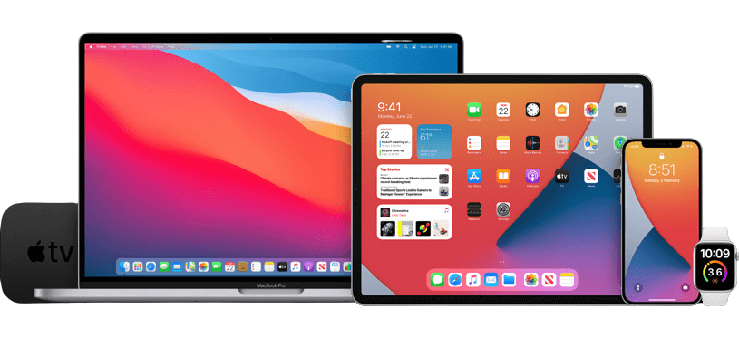The use of beta profiles in R&D and testing is essential. They allow for the collection of useful consumer feedback in advance of a product’s official release, which can then be used to repair bugs and improve the product. This post will introduce the idea of beta profiles, as well as discuss its value, advantages, best practices, and tools for development. We’ll talk about real-world examples, difficulties, and the ways in which companies might use beta profiles to expand.
What are Beta Profiles
Limited groups of users or customers are given access to pre-release versions of a product or service known as beta profiles. Companies can utilize these profiles to learn about the people who will test their products and give them comments on their features, functionality, usability, and overall user experience.
Importance of Beta Profiles
In the product creation process, beta profiles are essential. They help businesses find and fix any faults, get valuable input from customers, and guarantee that the final product lives up to or surpasses customer expectations. The danger of releasing a faulty product is mitigated and the product’s chances of success in the market are increased when real users are included in the testing process.
Types of Beta Profiles
Beta profiles come in a variety of flavors, each tailored to a certain audience and development milestone. Only those users who have signed up for or been invited to take part in the closed beta profile will have access to its features. On the other side, open beta profiles are available to a wider audience and typically don’t necessitate an invitation. With a hybrid beta profile, you can distribute to a select group of people while also making the beta available to the general public.
Benefits of Beta Profiles
Early Feedback: Beta profiles allow companies to gain early insights and comments from actual users, allowing them to fix any problems or enhance the product before it is released to the public.
Enhanced User Experience: Beta profiles improve user satisfaction by getting people involved in the testing process and increasing the likelihood that the final product will fulfill their requirements and expectations.
Bug and Issue Identification: Companies can find and correct problems, malfunctions, and other issues that might have been missed during internal testing thanks to beta profiles, leading to a more stable and reliable final product.
Market Validation: Businesses can gain valuable insight into the viability and potential success of a product or service by listening to the opinions of beta testers.
Best Practices for Beta Profiles
Best practices must be followed to get the most out of beta profiles:
Define Clear Objectives: Outline the beta profile’s intended outcomes, such as the type and quantity of user feedback desired.
Identify Target Audience: Determine who will make up the beta profile and make sure it reflects your targeted user group while still capturing a wide range of opinions.
Communicate Expectations: Explain to beta testers why you’re using this profile, what you expect of them, and how you want them to submit input.
Provide Adequate Support: Provide beta testers with thorough documentation, tutorials, and support channels to help guide them and quickly address any questions or problems they may have.
Iterate and Improve: Maintain a steady cycle of iteration in which you take customer feedback and use it to make tweaks to the product.
Tools for Creating Beta Profiles
now are a number of helpful platforms and applications out now for making and managing beta profiles:
TestFlight: Apple’s TestFlight is a widely used service for delivering beta builds of iOS, watchOS, and tvOS apps to third-party testers.
Google Play Console: Android app developers can use the Google Play Console to set up closed beta accounts and distribute their apps to a select group of users for testing.
Beta Testing Services: Distribution, feedback collection, and crash reporting are just a few of the many features offered by beta testing services like Beta Family, TestFairy, and Firebase App Distribution.
In-house Solutions: There are businesses that would rather build their own systems for managing beta profiles in-house to make use of their unique resources and needs.
Case Studies of Successful Beta Profiles
Instagram Stories: Before making Instagram Stories available to everyone, the company tested it with a small sample of users in a “beta” release. The feature’s enormous success can be attributed in large part to the constructive criticism received during its beta profile.
Microsoft Windows Insider Program: The Windows Insider Program from Microsoft is a highly effective open beta profile. You may help shape the future of the Windows operating system by testing preview builds and providing feedback.
Challenges and Risks of Beta Profiles
Although beta profiles have many advantages, there are also some drawbacks to think about:
Limited User Base: Due to the small sample size of a beta profile, the collected data may not be representative of the whole spectrum of potential customers.
Quality of Feedback: It might be difficult to glean actionable insights for product enhancement when not all beta testers provide thorough or valuable input.
Data Security and Privacy: Due to the potentially sensitive nature of the data exchanged in beta profile with external testers, stringent safety precautions are warranted.
Public Perception: The public’s opinion of a product or brand can take a hit if a flawed beta version is issued.
How to Leverage Beta Profiles for Business Growth
To make the most of beta profile for company expansion:
Identify Key Objectives: The beta profile should be created with specific business goals in mind, such as increasing user participation, validating features, or testing the market.
Target the Right Audience: Beta testers should be representative of your ideal customers so you may collect input from people most likely to buy and use your product.
Analyze and Iterate: Use the data gathered from the beta profile to analyze user feedback, spot trends, and decide how to move forward with product development.
Create Buzz and Excitement: Leverage channels such as social media, influencers, and press releases to get the word out about the future product and use the beta profile to your advantage.
Conclusion
Beta profile are a great way for companies to get feedback from customers, find bugs, and improve their goods before they are released to the public. Businesses may boost customer satisfaction, lower risk, and fuel expansion by adhering to best practices, using the correct tools, and collaborating with beta testers. Better results and happier customers can be achieved by treating beta profile as an integral part of the product development











